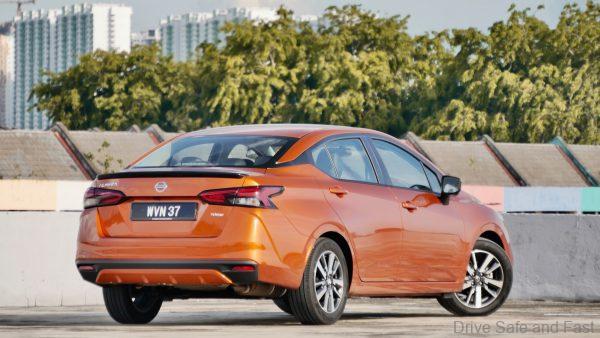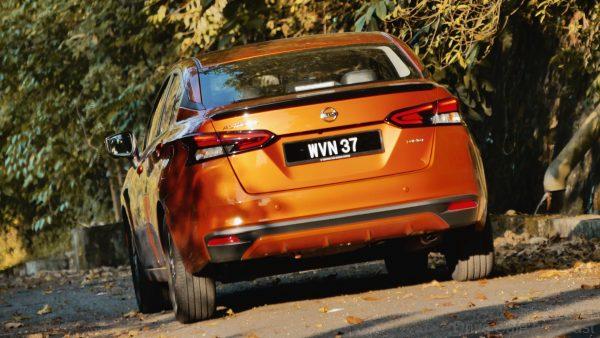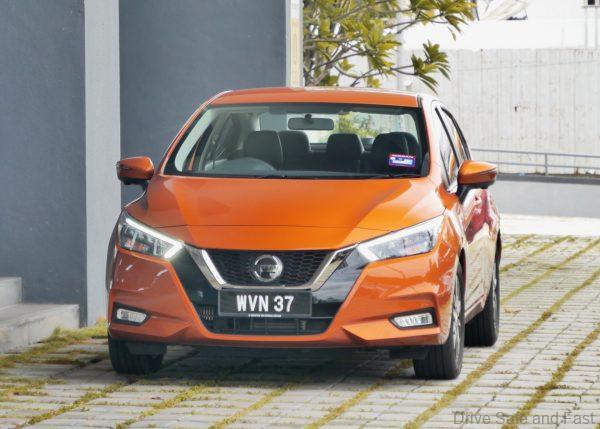Our review of the full-spec, locally-assembled Nissan Almera Turbo VLT for Malaysian customers.
The New Nissan Almera Turbo is nothing like the last one. It was introduced to Malaysia late last year and is now the only Japanese B-segment sedan to offer a turbocharged engine and autonomous emergency braking as standard. That’s pretty amazing, especially when you consider that just one generation ago, the Almera was the only Japanese B-segment sedan to still use a 4-speed conventional automatic and not feature Stability Control.

Nissan has clearly started responding aggressively to the changing market realities. It shows right away with the way they’ve packaged, priced and designed the new Almera. But let’s take a closer look at each aspect to see if this is just a game of catch-up, or if that legendary Nissan engineering department has woken up.

Driving the New Almera Turbo
As we mentioned before, this is currently the only Japanese option with a turbocharged engine. However, it is also the only one with a small 1.0L engine and 3-cylinder layout. These can turn some traditional buyers away, but we don’t think it was done poorly at all here. The 1.0L displacement worked really great in reducing fuel consumption. We had the car for a week and used it every single day extensively. Before returning it, an RM20 top-up netted us a lot more range than expected, so we’re convinced of the claimed 5.4L/100km efficiency rating.

The car moves along nicely without needing much persuasion. Torque is pretty high for this segment at 152Nm, and it’s available with just a little depression of the accelerator pedal. There’s also a sport mode for the gearbox, which actually makes the car a little more engaging. When pushed hard, there’s a characterful engine note and enough punch to put a smile on one’s face. Despite being quite a comfortable vehicle, you get some surprising dynamics from the newly revised chassis.

The steering feel is rather good, and the flat-bottomed steering wheel is the only one in the segment. It’s nicer in the hand than the current steering wheel of the Toyota Vios, but the leather used to wrap the wheel isn’t quite as supple as what’s found on the Honda City. Functionally, the D-shaped wheel in the Almera clears a little more thigh room for the driver too.

And that leads us to practicality and comfort. On the one hand, the Almera no longer offers the largest boot in the segment and its new sloping roofline will make it a little less practical for taller adults in the rear. On the other hand, the suspension on the new car is more sophisticated and soaks up bumps really well. All-in-all, we really liked how much more modern the new Almera Turbo is behind the wheel. It finally feels like it’s fighting on the same level playing field as its contemporaries and has a unique character of its own with that engine.
Almera Turbo Look and Feel
Design is such a subjective element, but in my opinion, Nissan objectively did the best job in this segment. The proportions of the new Almera look the most sedan-like of its rivals and yet it also has the sleekest integration of a sloping roofline.

From the rear, the Almera Turbo shows a lot of character. The use of black plastic on the C-pillar helps to give the Almera more visual breathing room and hide the B-segment size restrictions. The use of darkened inlays for the taillight design gives the car a more sporty look.
You also have a body-coloured lower bumper element that’s pretty unique in this segment. The VLT model we tested also comes with a black spoiler, which had better finishing than the spoiler on the pre-facelift Vios, as Nissan seems to paint this part separately from the body.

The face of the new Almera Turbo is a lot more aggressive and stylish than its bulbous predecessor. At the same time, it is a lot more modern-looking thanks to LED headlights and contrasting black elements that feel integrated from the designer’s studio.
Inside, the Almera Turbo is an extremely place to be in. There’s a lot of contrasting elements – white on black leather upholstery on the seats, white leather upholstery on the dashboard… It’s not something one expects in an entry-level Japanese B-segment sedan. It’s clear that Nissan really wanted to show that the Almera you used to know is gone.

Equipment in the Almera
Nissan has gone to the extent of moving the pust-to-start button to the centre console, just as some modern premium marques like BMW and Audi are doing. They’ve also given the Almera a really good 8″ head unit with Android Auto readiness, Apple Carplay, and a 360-degree camera display (VLT variant).

The previously mentioned flat-bottomed steering is one of the highlights of the cabin as well. But right behind that is my favourite element – the semi-digital instrument cluster. Of all its rivals, Nissan’s implementation of a digital instrument cluster is my favourite. For the Honda City petrol models, you get a very basic monochromatic digital readout for the trip computer. In the Toyota Vios, you get a colour display, but again, its use is for trip computer functions mostly. The Almera Turbo VLT uses this display to show all sorts of information, from the tachometer to the Advanced Driving Assistant System functions.

Seats are comfortable in the Almera Turbo. We personally prefer fabric seats to the sort of leather you get in here, but that’s a minor issue. It is unfortunate that the rear passengers do not get a air conditioner vent – only the City seems to address this. All rear passengers get in the Almera turbo is a single USB Type-A port for charging and an armrest.

Safety is one area where Nissan have really improved the Almera. As standard, all variants of the new Almera Turbo get Vehicle Stability Control and Nissan’s Intelligent Forward Collision Warning and Intelligent Forward Emergency Braking. That’s right, the Almera is now the only car in its segment to have autonomous emergency braking as standard. Some vehicles, like the City, don’t even offer this feature for their petrol variant. The top spec Almera Turbo also comes with 6 airbags and blind spot monitoring.

All-in-all, I’d say that Nissan really flipped the script with the Almera Turbo. It’s so unlike the previous car in look, feel, drive and equipment that it perhaps deserves to be called something else entirely. If you’re on the fence about the car based on the reputation of the old one, we suggest arranging for a test drive to experience it for yourself.
Nissan Almera Turbo VLT Specifications
Engine: Inline-3, 12-Valve, DOHC, turbocharged Petrol
Capacity: 999cc
Gearbox: XTRONIC CVT
Max power: 99hp @ 5,000rpm
Max torque: 152Nm @ 2,600rpm
Price: RM91,310










